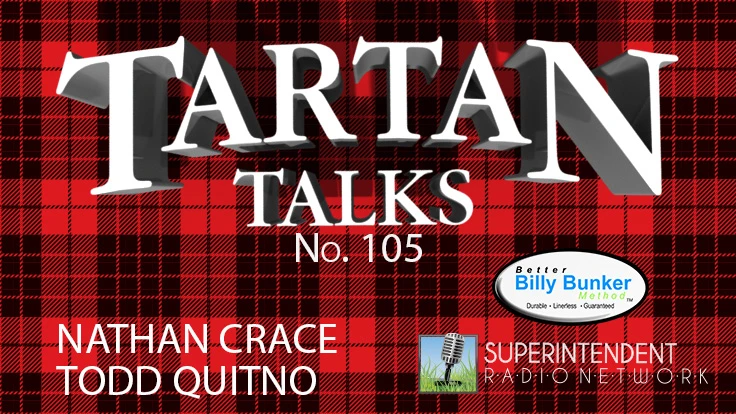
Adobe Stock
Carlos Arraya remembers walking up the stairs at Hawk’s Nest Golf Club in Vero Beach, Florida, a binder stuffed with spreadsheets tucked under an arm. After four months in charge as the interim general manager, he had received word that club officials had decided on a more permanent hire and he was bringing his work straight to the top, handing it over to whomever his successor might be.
After Arraya placed the binder on a desk, one of those officials told him they were about to introduce the new GM. Arraya waited, but nobody else entered the room.
“Where is he?” Arraya asked, confused.
“You’re the guy,” he was told. “We’d love for you to do it if you’re interested.”
Arraya was stunned. Just 30 years old at the time, he had filled the position out of necessity after his predecessor had departed near the start of the financial crisis that swelled into the Great Recession. Club members were leaving. The dues line was dropping. Expenses were still the same if not bumping up a bit. Hawk’s Nest would soon need to trim its budget by more than half a million dollars. The club ultimately survived — and later thrived — while so many others shuttered forever, but none of that was guaranteed when Arraya received the job offer. Was he ready?
What do you think?
“I don’t think you’re ever ready,” says Arraya, who wound up learning more than enough to remain the general manager at Hawk’s Nest for almost six years and today is the general manager and CEO at Bellerive Country Club just outside St. Louis. “I think you think you can do it — we all have ambitions — but I did not have the qualifications in 2008. I didn’t think I was ready, but I also wasn’t afraid of becoming uncomfortable and pushing the limits of what I could do.”
Arraya is — at least stereotypically — a rarity in the golf course maintenance world: A turf pro who embraced the business side of the industry, becoming as comfortable in a suit as he once was in work pants, boots and the occasional round of rain gear. But he is not alone. Arraya shifted over initially out of necessity. Others have moved into the business of the game, adding to their skillset and their résumé, because of curiosity, or ambition, or just to save some extra money on annual and quarterly taxes.
Business and finances beyond the annual maintenance budget might seem overwhelming. Arraya says the first time he looked over club finances, “I was so oblivious to it that I wasn’t afraid of it.”
“A lot of it was the shock factor of how clubs run,” he says. “They’re all so different. I had to learn the fixed costs associated to other areas. There was a learning curve associated with the difference of the (cost) centers of the club. I knew (about capital planning and operations), because of the Certified Golf Course Superintendent testament, but as far as balance sheets, I had no training. But the club felt I had all the prerequisite leadership skills and the financial training was not at all a big deal. They thought, ‘You can learn numbers, you can’t teach leadership.’
“I had a lot of mentors there who taught me how to read a balance sheet, depreciation, accrual accounting, T-tables. I don’t need it now because I have a CFO, but at a smaller club I needed more of the nuts and bolts of accounting.”
He didn’t know what he didn’t know. Even now, three years after his most recent promotion, he still doesn’t know everything. Do you know what you don’t know? And how can you make the move?
“It’s just like turf,” Arraya says. “You didn’t know how to grow grass. You didn’t know the difference between a systemic fungicide and a contact fungicide, but you studied it. Same thing with the financials. You take a label and you read. Financials are just numbers. If you don’t understand something, you ask questions. The best grass growers, the best operators, the best leaders, ask questions. There are people around here who are tired of me asking questions. I ask questions even of the best members. Some of the best CEOs in St. Louis and the Midwest are here. You ask those questions, you learn a lot.
“There are just a lot of moving parts. When you’re in operations as a golf course super and then you have to become a strategic thinker and leader, it’s much different.”
Take results, for example. “There’s an immediacy to operations,” Arraya says. “Whether it’s food and beverage, rackets, or golf, you see the difference right away. When you’re running a business, you don’t see those numbers right away like when you’re on the operations side. It’s not till you’re either forecasting the change or you experience the change on your next financial statement.
“You never feel like you get anything done when you’re a CEO.”
Still, he says, more turf pros should at least think about taking that next step.
“Step outside your comfort zones,” Arraya says. “If you really want to be in business, be a GM, a CEO, a COO, go get it. Don’t be afraid to go ask questions. You know how many people told me I couldn’t do this?”
Matt LaWell is Golf Course Industry’s managing editor.
Latest from Golf Course Industry
- Schaffer’s Mill turns to Troon for management
- Talking Turf Weeds 13: Talking seasonal change with Heidi Burgess and Paul Marquardt
- Beyond the Page 65: New faces on the back page
- From the publisher’s pen: New? No way!
- Indiana course upgrades range with synthetic ‘bunkers’
- Monterey Peninsula CC Shore Course renovation almost finished
- KemperSports and Touchstone Golf announce partnership
- PBI-Gordon Company hires marketing manager Jared Hoyle







